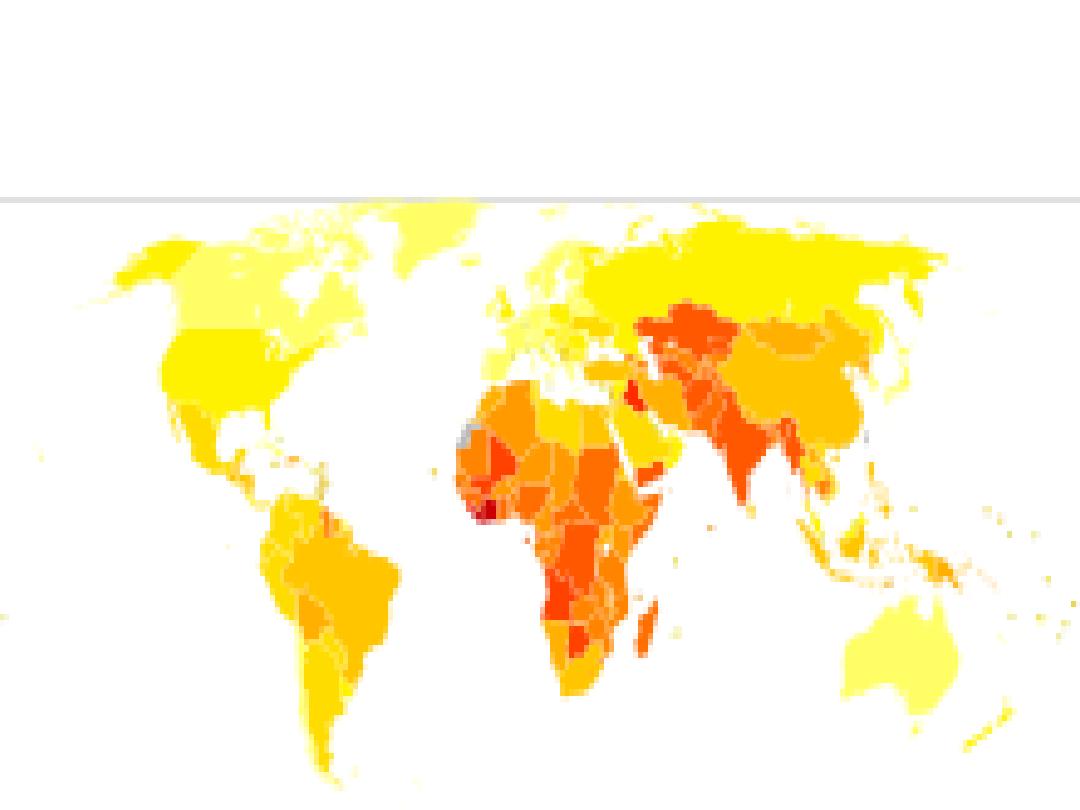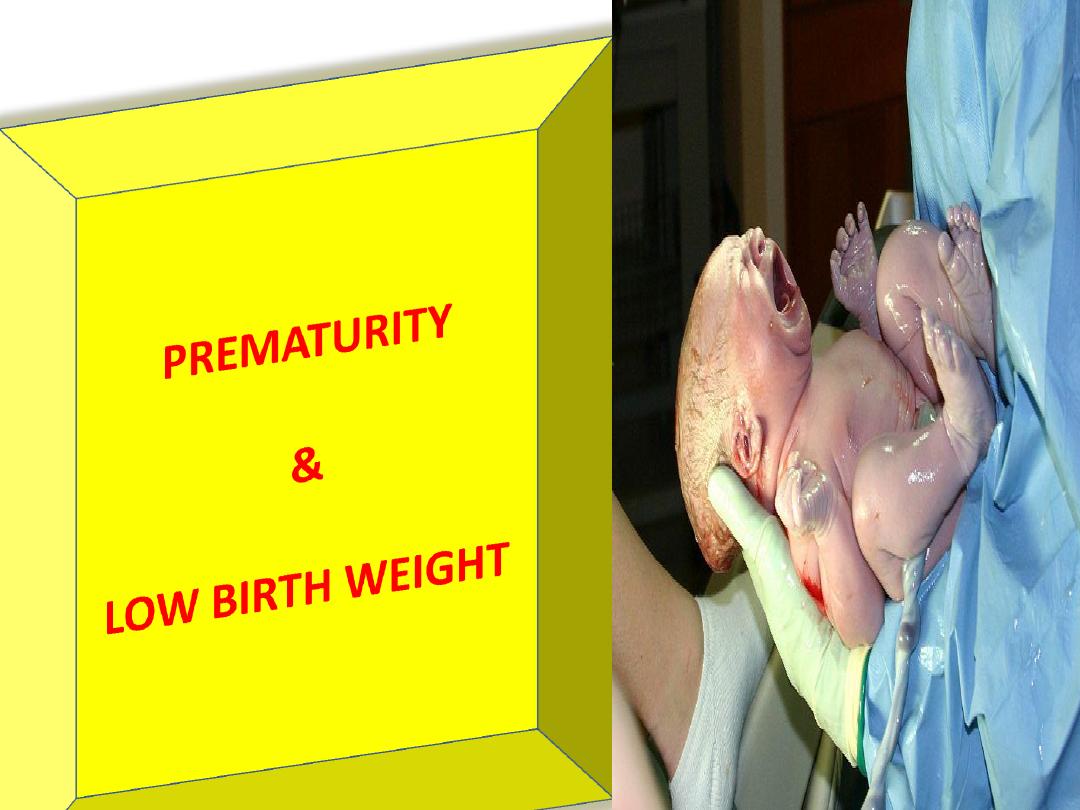



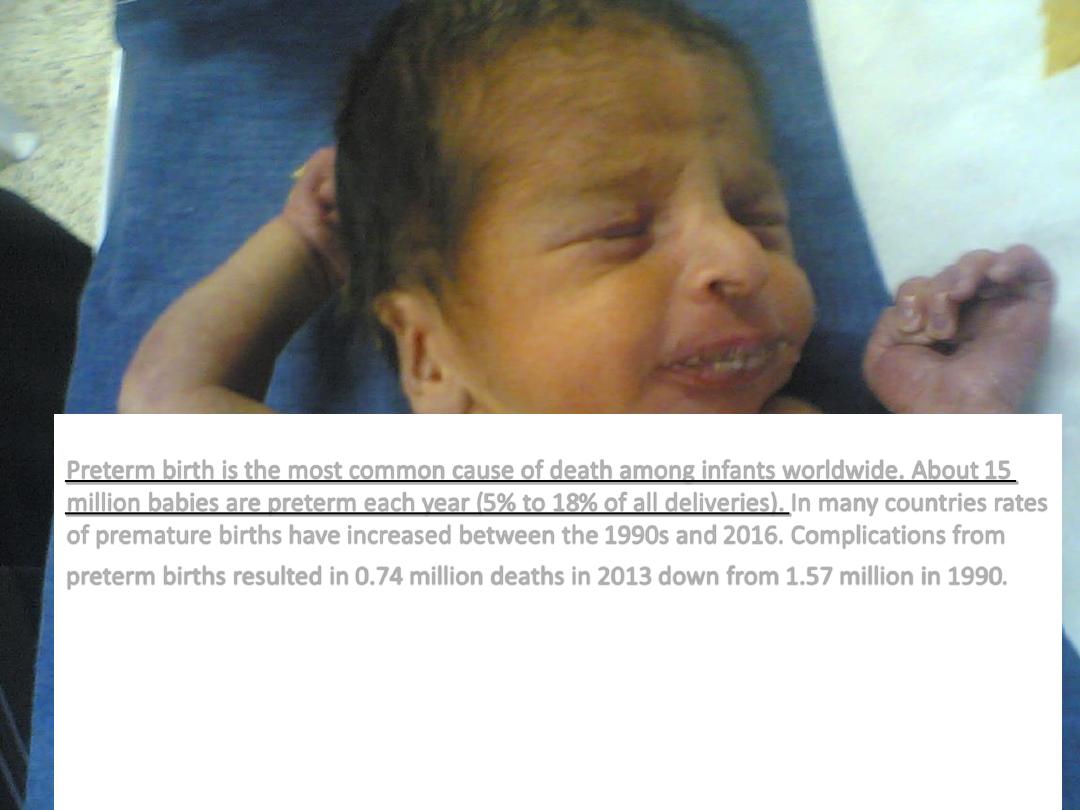
15
Preterm birth is the most common cause of death among infants worldwide. About
In many countries rates
% of all deliveries).
18
% to
5
million babies are preterm each year (
of premature births have increased between the 1990s and 2016. Complications from
preterm births resulted in 0.74 million deaths in 2013 down from 1.57 million in 1990.
is
the most common cause of death among infants worldwide.[1]
About 15 million babies are preterm each year (5% to 18% of all
deliveries). In many countries rates of premature births have
increased between the 1990s and 2010s.[3] Complications from
preterm births resulted in 0.74 million deaths in 2013 down from
1.57 million in 1990.[11] The chance of survival at fewer than 23
weeks is close to zero, while at 23 weeks it is 15%, 24 weeks 55%
and 25 weeks about 80%.[12] The chances of survival without long
term difficulties are lower.[13]th is the most common cause of
death among infants worldwide.[1] About 15 million babies are
preterm each year (5% to 18% of all deliveries). In many countries
rates of premature births have increased between the 1990s and
2010s.[3] Complications from preterm births resulted in 0.74
million deaths in 2013 down from 1.57 million in 1990.[11] The
chance of survival at fewer than 23 weeks is close to zero, while at
23 weeks it is 15%, 24 weeks 55% and 25 weeks about 80%.[12]
The chances of survival without long term difficulties are lower.[13]
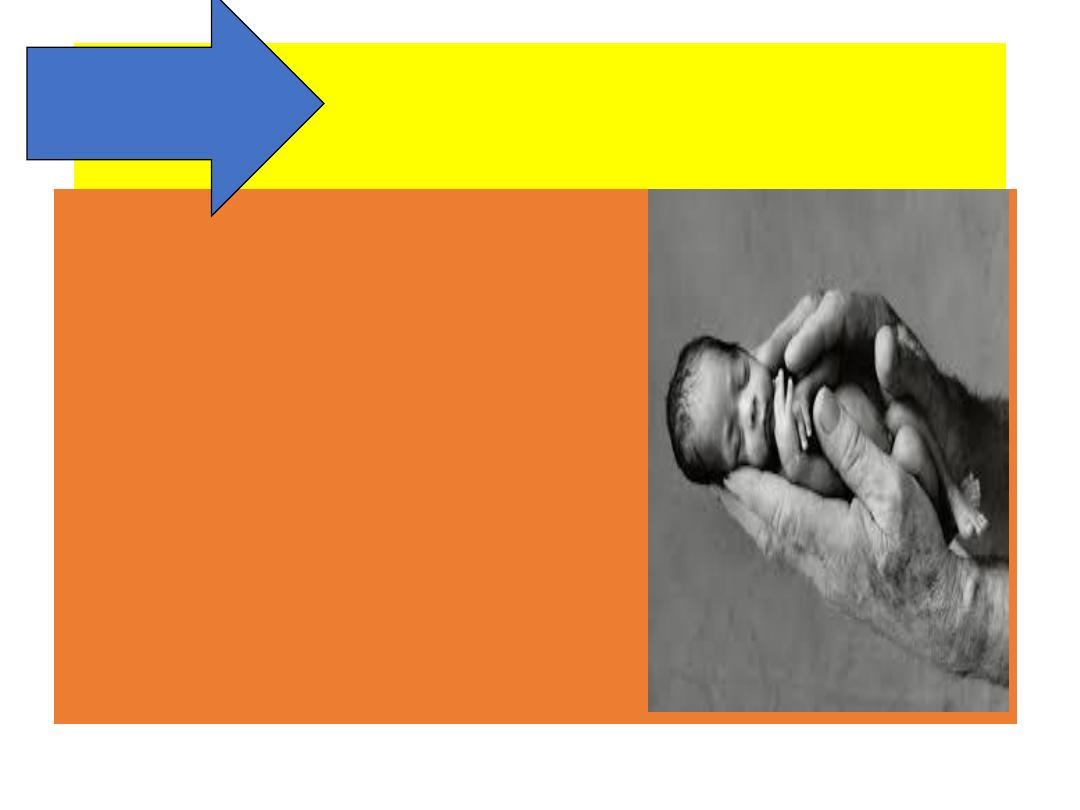
Definition :
What is
preterm birth?

The delivery of a
baby before
37
completed weeks'
gestation.

Definition ii:
What is Birth
Weight?
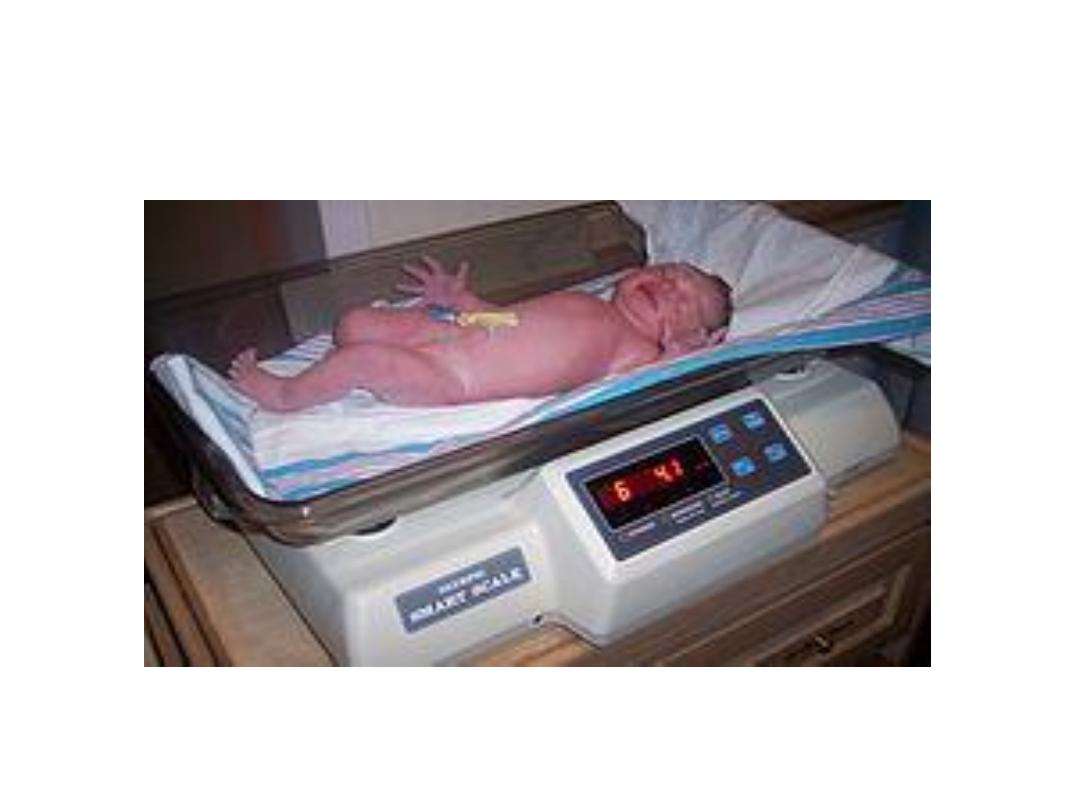
Birth weight is the body weight of
a baby at its birth

Determinants of birth weight
•There is a relation between
birth weight and gestational
age.
• 28 weeks : 900 g
• 36 weeks : 2750g
•

Definition ii:
What is Low
Birth Weight?
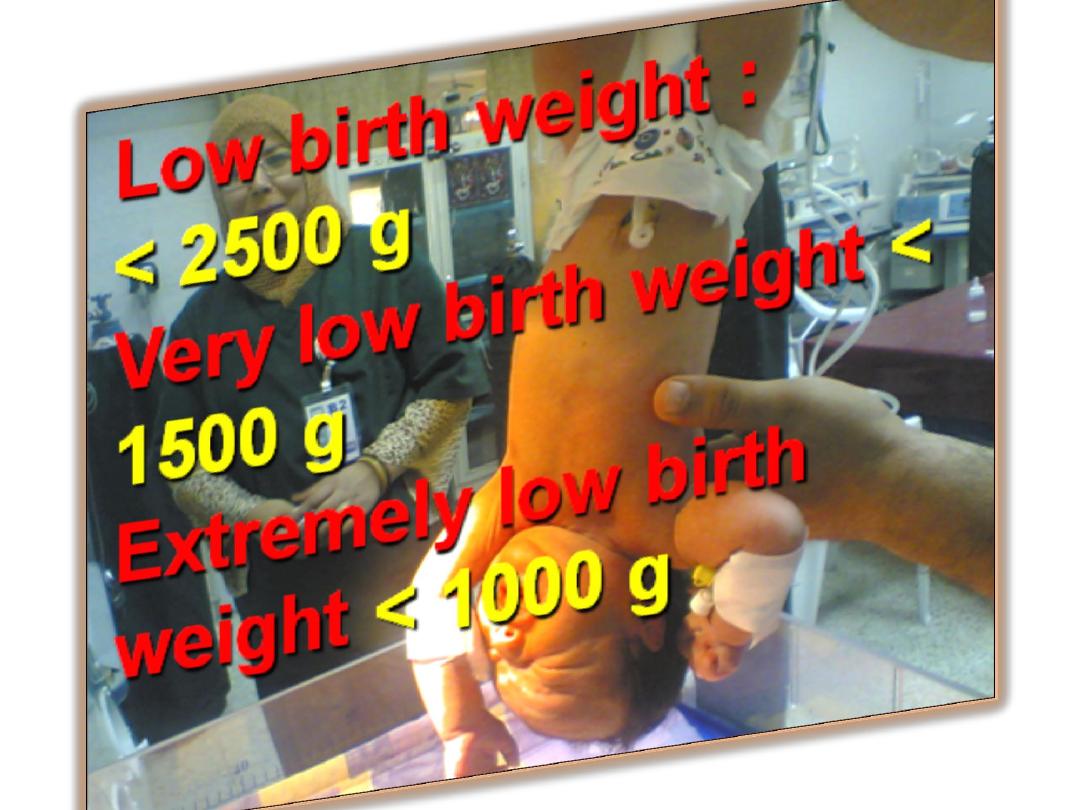

Low birth weight
1- Preterm birth
2-Term but small for gestational age
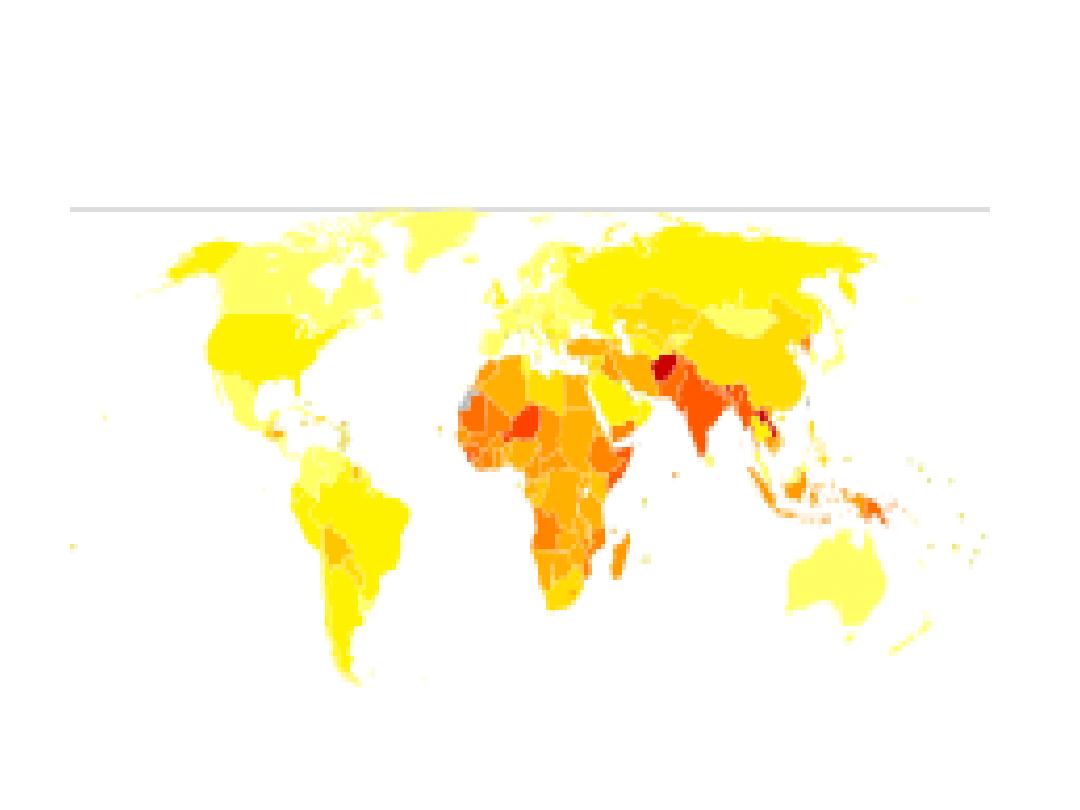
Epidemiology of Low Birth Weight

The earliest
at which there is 50%
chance of survival is the
The boundary between
preterm live birth and
abortion varies
internationally20 to 24
weeks.
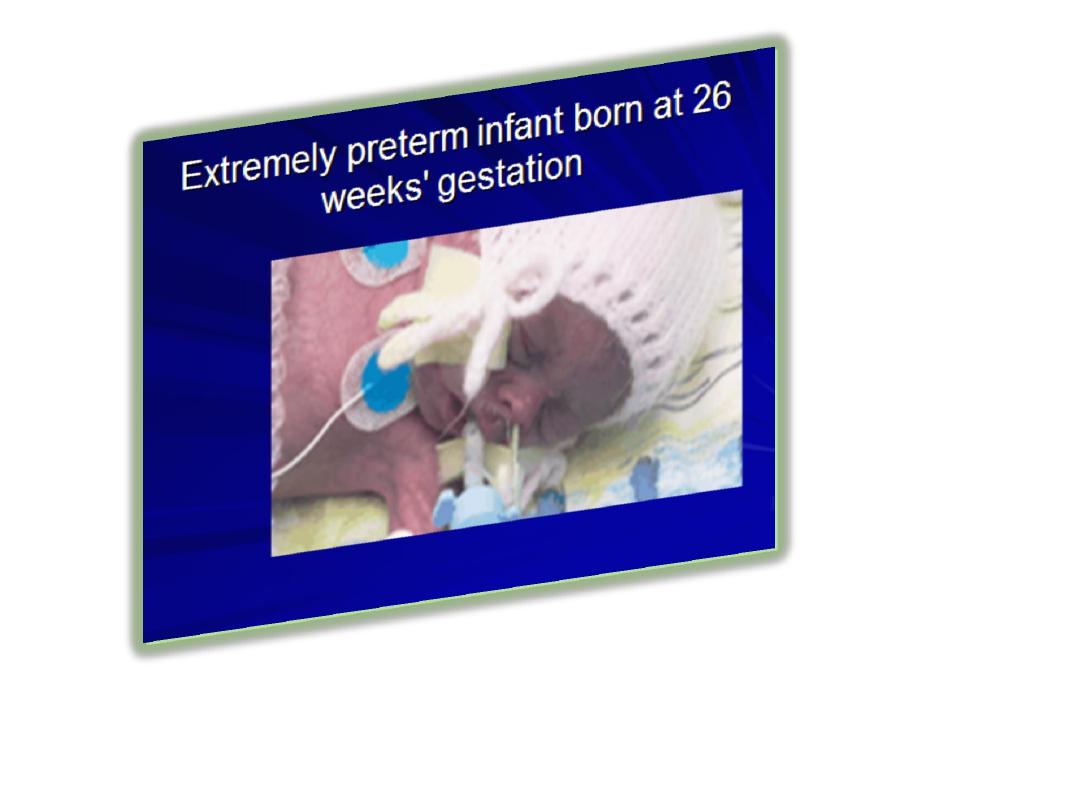
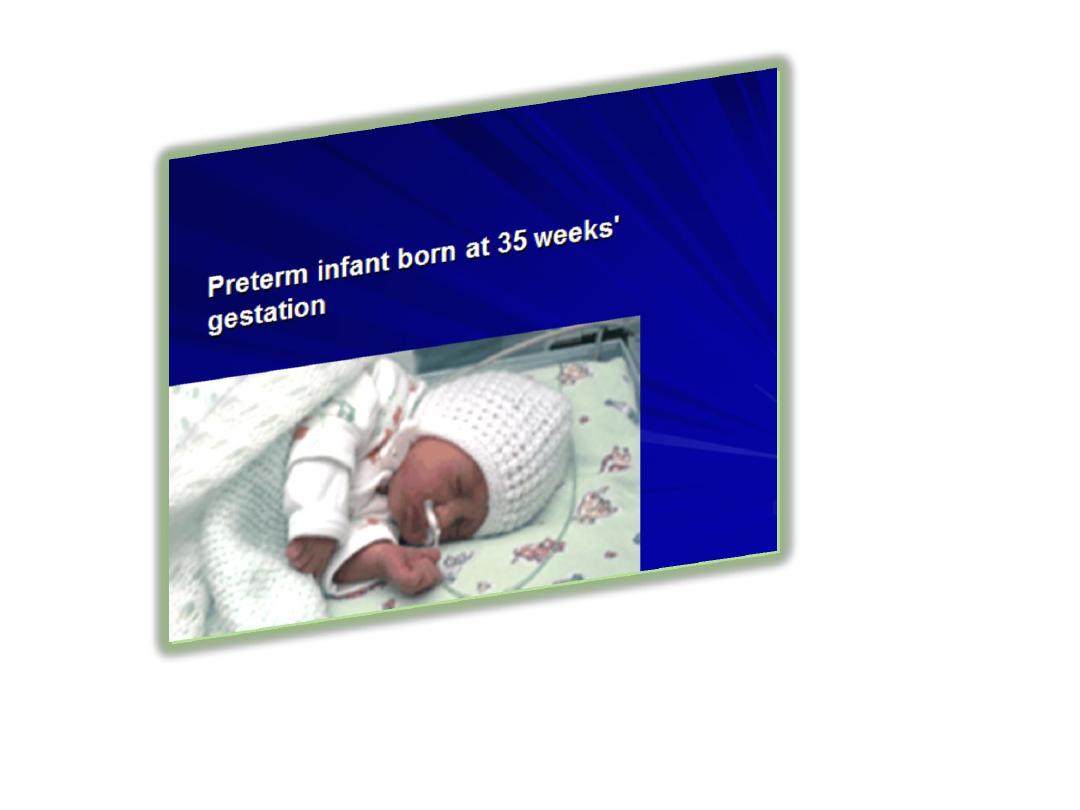

Epidemiology
In Europe and many developed
countries the preterm birth rate
is generally 5–9%, and in the
USA it has even risen to 12–13%
in the last decades
.

RATES IN IRAQ
In Iraq 15-16% of births are
low birth weight just over one
third is born premature

Global incidence rise?
1-increasing rates of multiple births
2-greater use of assisted
reproduction techniques
3-more obstetric intervention.

4-Depending on ultrasound rather than LMP to
estimate GA (wide margin of error).
5-inconsistent classification of abortion,still birth,
and early neonatal death.

Mortality and morbidity
1-Worldwide, prematurity accounts for
10% of neonatal mortality.
2-In U.S. prematurity is the leading cause
of neonatal mortality at 25%.

TYPES OF DELIVERIES
1-Spontaneous preterm births
: 40–45% preterm
births that follow preterm labour
2- 25–30% are
induced
preterm births i.e premature
rupture of membranes.
3- (30–35%) are preterm births via
Cesarean
section
for obstetrical reasons; (i.e.
)

5%
of preterm births occur at less than 28 weeks
(
extreme prematurity
),
15%
at 28–31 weeks
(
severe prematurity
),
20%
at 32–33 weeks
(
moderate prematurity
), and
60–70%
at 34–36
weeks (
late preterm

•
To highlight the importance of timing of
elective cs that is now recommended at
39 weeks ,infants that are born between
37 to less than 39 weeks are known as
•
Premature term
(are
liable for term RDS)

Clinical impact of prematurity
•Immediate:
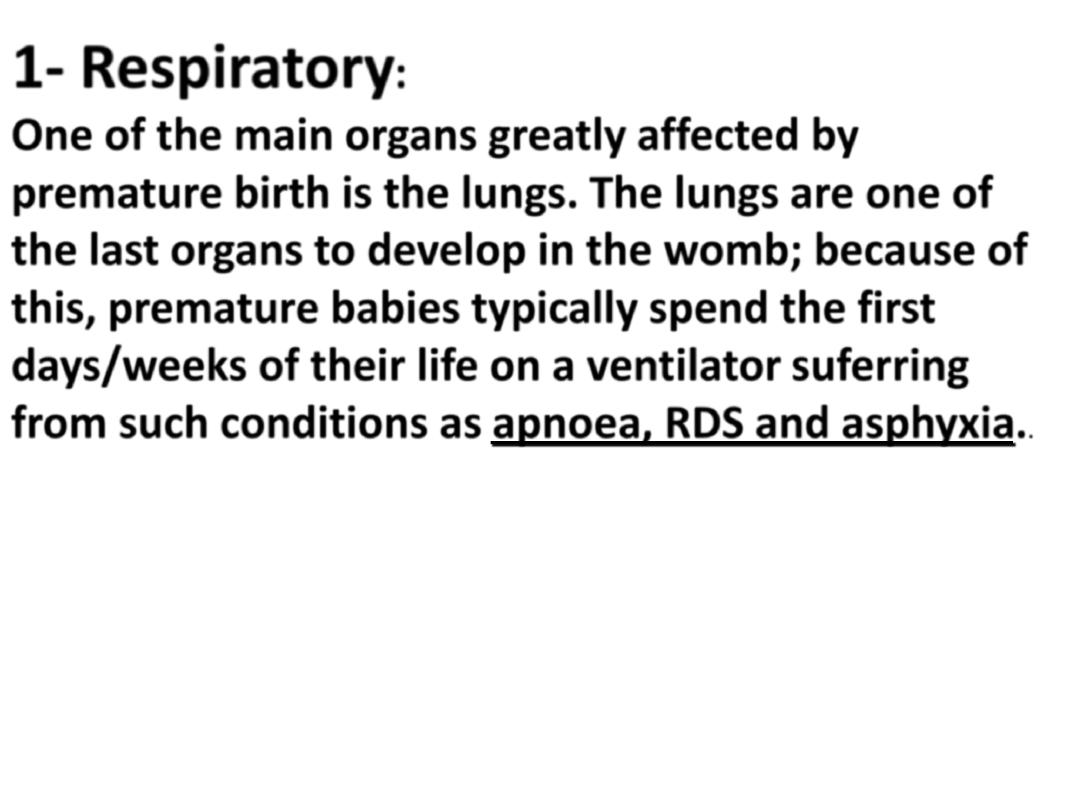
1- Respiratory
:
One of the main organs greatly affected by
premature birth is the lungs. The lungs are one of
the last organs to develop in the womb; because of
this, premature babies typically spend the first
days/weeks of their life on a ventilator suferring
.
.
, RDS and asphyxia
apnoea
from such conditions as
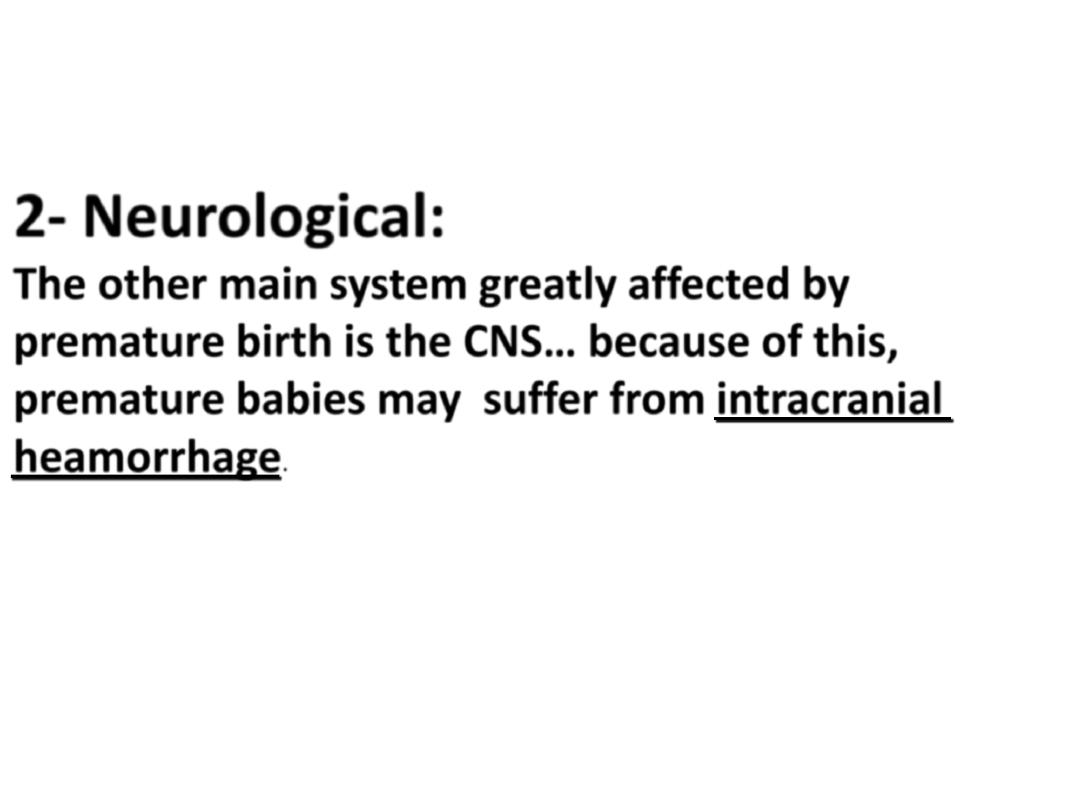
2- Neurological:
The other main system greatly affected by
premature birth is the CNS… because of this,
intracranial
premature babies may suffer from
.
heamorrhage
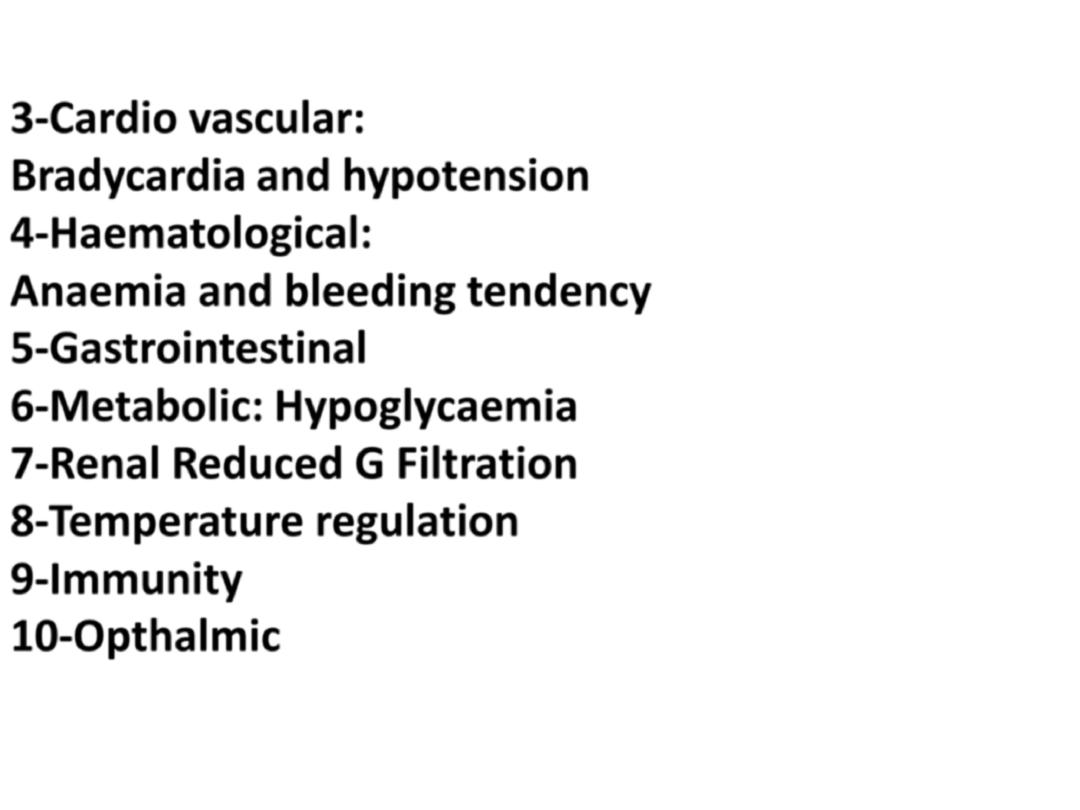
3-Cardio vascular:
Bradycardia and hypotension
4-Haematological:
Anaemia and bleeding tendency
5-Gastrointestinal
6-Metabolic: Hypoglycaemia
7-Renal Reduced G Filtration
8-Temperature regulation
9-Immunity
10-Opthalmic

Clinical impact of prematurity
•Late:
• Chronic lung diseaes
• CNS especially cerebral palsy
• Poor growth

4
different pathways can result in preterm birth :
1-Precocious fetal endocrine activation.
2-Uterine over distension.
.3-Decidual bleeding
4- Intrauterine inflammation/infection.


Kangaroo Care

Implications
of low birth
weight

perinatal &
infant mortality

Increasing
incidence
globally

Human
wastage

Emotional
suffering

Very high cost
of NICU care

•PREVENTION

PREVENTION
• A- Direct Intervention:
• 1- Identification of women at risk:
• a- maternal malnutrition
• b- heavy work load
• c- medical illnesses
• d- infections especially urinary
• e- raised blood pressure
•

PREVENTION
• A- Direct Intervention:
• 1- Identification of women at risk:
• f- too many pregnancies
• g- close spacing between births
• h- multiple pregnancy
• i- under 18 & over 35

PREVENTION
• A- Direct Intervention:
• 1- Identification of women at risk:
• J- Short stature
• k- Poor weight gain in pregnancy
• l- ethnicity
• m- pscychological stress
• n- Rural residence
• o- previous LBW
• P- OTHERS..ALCOHOL

PREVENTION
• B- Indirect Intervention:
• 1- Family planning
• 2- Sanitation
• 3- Avoid smoking
• 4- Nutritional care
• 5- Combating poverty and deprevation

SMOKING & LBW
1-Decreases
maternal
appetite
2-Direct toxic
effect
3-Nicotine is a
vasoconstrictor
leading to
placental
insufficiency
4-raised carbon
monoxide levels


Leading Causes of Death:
• 1- Atelectasis,Hyaline membrane disease and
surfactant deficiency.
• 2- Life threatening malformations
• 3- Pulmonary heamorrhage
• 4- Intracranial bleeding following anoxia and
trauma
• 5- Pneumonia,infections and cold injury especially
in winter.

Latest Recommendations
•It is recommended that labor not be
medically induced before 39 weeks
unless required for other medical
reasons. The same recommendation
applies to cesarean section

•There is significant evidence that
long term (> one year) use of
folic acid supplement
preconceptionally may reduce
premature birth

• The chance of survival at less than 23 weeks is close
to zero, while at 23 weeks it is 15%, 24 weeks 55%
and 25 weeks about 80%.The chances of survival
without long term difficulties is less. In the
developed world overall survival is about 90% while
in low income countries survival rates are about
10%

• About 75% of nearly a million deaths due to
preterm delivery would survive if provided
warmth,
breastfeeding, treatments for infection, and
breathing support.
If a baby has respiratory faliure
and cardiac arrest at birth and is before 23 weeks
or less than 400 gms attempts at resuscitation are
not indicated

• In a 2012 policy statement, the American Academy
of Pediatrics recommended feeding preterm infants
human milk, finding "significant short- and long-
term beneficial effects," including lower rates of
necrotizing enterocolitis (NEC).

Iraq
• A high percentage of LBW in the Iraqi community
points to deteriorating health status of pregnant
women, younger age at marriage,inadequate
prenatal care and poor compliance with family
planning(close spacing) .

Harvard Report(after events of
2014 in Iraq)
• Today levels of LBW in Iraq has reached
unprecedented rates, ranging from
• 31-50%
of all births have been recorded by
international bodies in Dyala , Anbar
and suburbs of Baghdad due to war.

Historical Figuers
(born in 1571 at 7
months gestation).
enough to fit into a mug)
months gestation).

Contemporary Figures
• Stevie Wonder Who is blind due to retinopathy of
prematurity

Winston Churchill

Newton


Thank You

